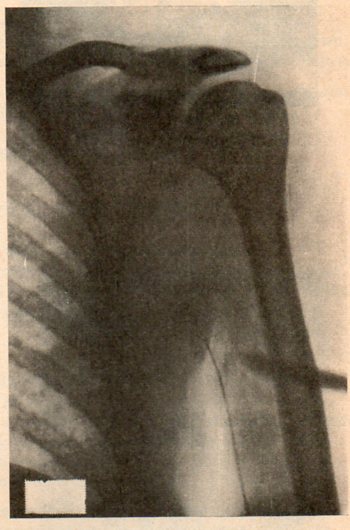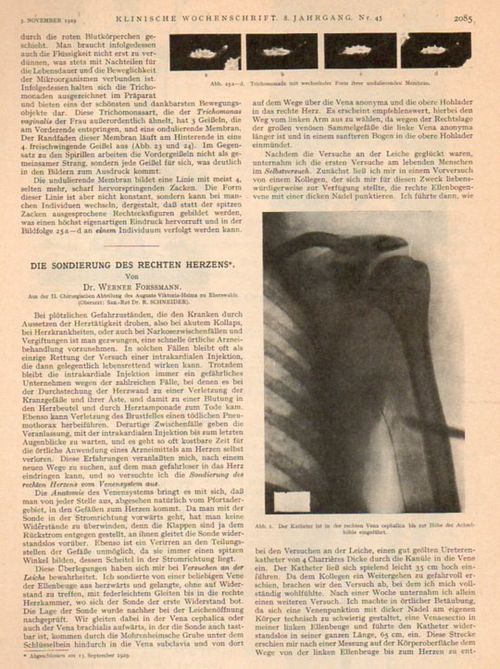JF Ptak Science Books Post 1580 [Part of the History of Lines series.]
Werner Forssmann (1904-1979) was a tough man. He had an idea for injecting drugs into the heart quickly for certain emergencies and came up with the idea of cardiac catheterization, thinking that it might be possible to pass a catheter through the veins of the arm and into the right side of the heart. In 1928 he acted on the idea, on himself: he applied a local anaesthetic and with a cannula inserted a catheter into the antecubital vein of his arm, sliding it 65 cm into his body; then he walked (with the aid of a nurse) into radiology and completed the journey of the catheter into the right auricle of his heart. He had tried this procedure earlier with the aid of another physician, who wound up alarmed because of the pricking something in along the way, not to mention the possible danger of inserting a foreign object into a living heart. Forssmann met success alone on the second attempt, though he did make an x-ray of his experiment:
That's some pretty significant self-experimentation. Forssmann would be awarded the Nobel Prize for Physiology or Medicine in 19561, 28 years after the publication of this epochal paper, and 13 years after the end of Forssmann's career as a surgeon-major during WWII, also during which he became a Nazi.
Notes:
1. "The Nobel Prize in Physiology or Medicine 1956 was awarded jointly to André Frédéric Cournand, Werner Forssmann and Dickinson W. Richards "for their discoveries concerning heart catheterization and pathological changes in the circulatory system..."
The above image is a detail from the illustration used in the publication of Forssmann's results "DieSondierung des rechten Herzens" in Klinische Wochenschrift (1928):





Comments